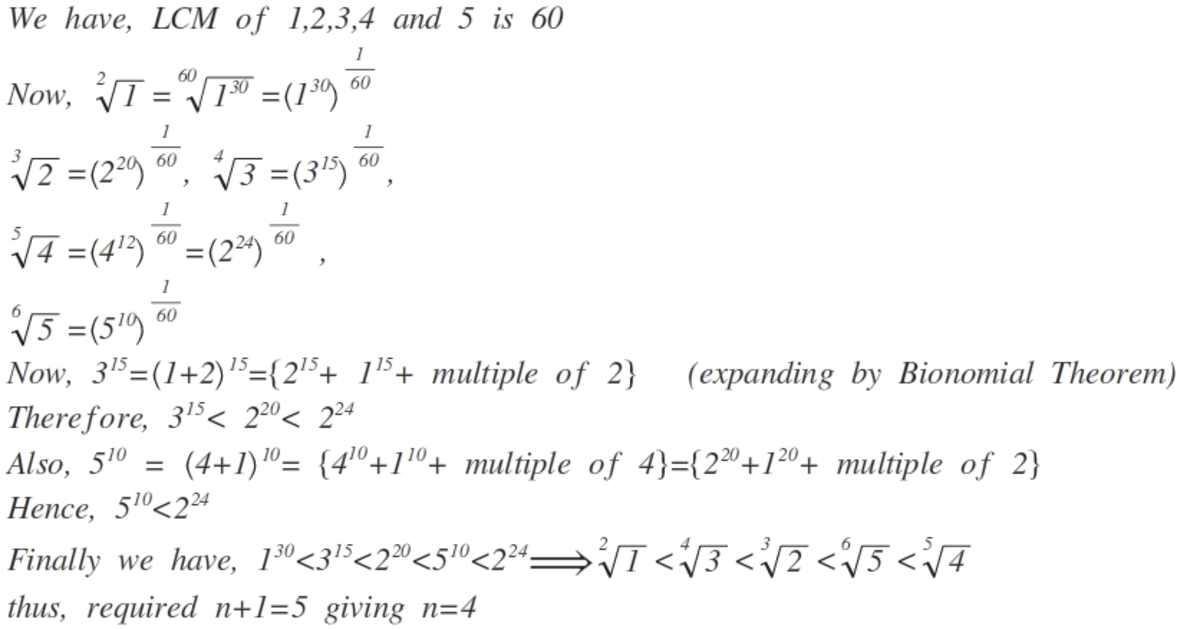Which Is The Biggest?
Find the largest value from the following:
If the largest value above is of the form , give the value of
The answer is 4.
This section requires Javascript.
You are seeing this because something didn't load right. We suggest you, (a) try
refreshing the page, (b) enabling javascript if it is disabled on your browser and,
finally, (c)
loading the
non-javascript version of this page
. We're sorry about the hassle.

1 = 1 . But what can we say about 3 2 versus 4 3 ? They are certainly both larger than 1, but we can use the order-preserving operation x 1 2 on each to see which is larger. ( 3 2 ) 1 2 = 1 6 and ( 4 3 ) 1 2 = 2 7 .
Therefore, 4 3 is larger than 3 2 . Now we compare 4 3 with 5 4 . Raising both of these to the 20th power, we get ( 4 3 ) 2 0 = 2 4 3 and ( 5 4 ) 2 0 = 2 5 6 .
Therefore, 5 4 is larger than 4 3 . Lastly, we'll compare 5 4 with 6 5 . Raising both of these to the 30th power, we obtain ( 5 4 ) 3 0 = 4 0 9 6 and ( 6 5 ) 2 0 = 3 1 2 5 .
We can conclude that 5 4 is the larger than 6 5 and all numbers after it, since the sequence n + 1 n approaches 1 as n → ∞ , meaning the sequence peaks at n = 4 and then approaches 1 asymptotically.
To be sure that the sequence doesn't peak again, we have to show the derivative of f ( x ) = x x + 1 1 only has one solution. Taking the logarithmic differentiation, we have f ( x ) f ′ ( x ) = x ( x + 1 ) 2 x + 1 − x ln ( x ) . At its extremal point, f ′ ( x ) = 0 , which means that x + 1 − x ln ( x ) = 0 or x ( ln ( x ) − 1 ) = 1 . Sketching out the two graphs for g ( x ) = x 1 and h ( x ) = ln ( x ) − 1 shows that there's only one intersection point. Hence, there's only one solution for f ′ ( x ) = 0 , equivalently the function f ( x ) only peak once. In other words, the sequence is decreasing from here on out.